Editor’s Picks: Chicago, Baltimore, and New York City
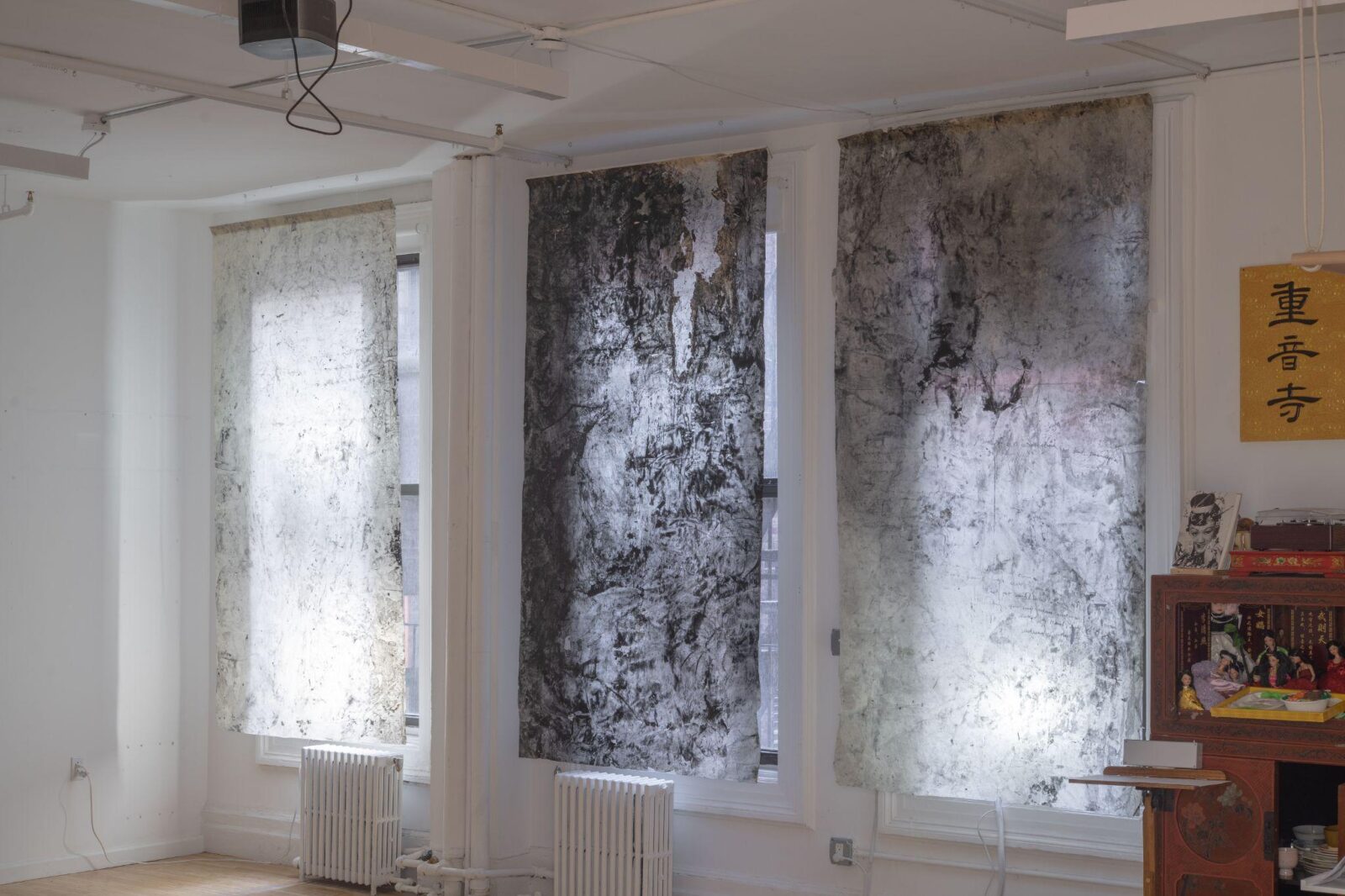
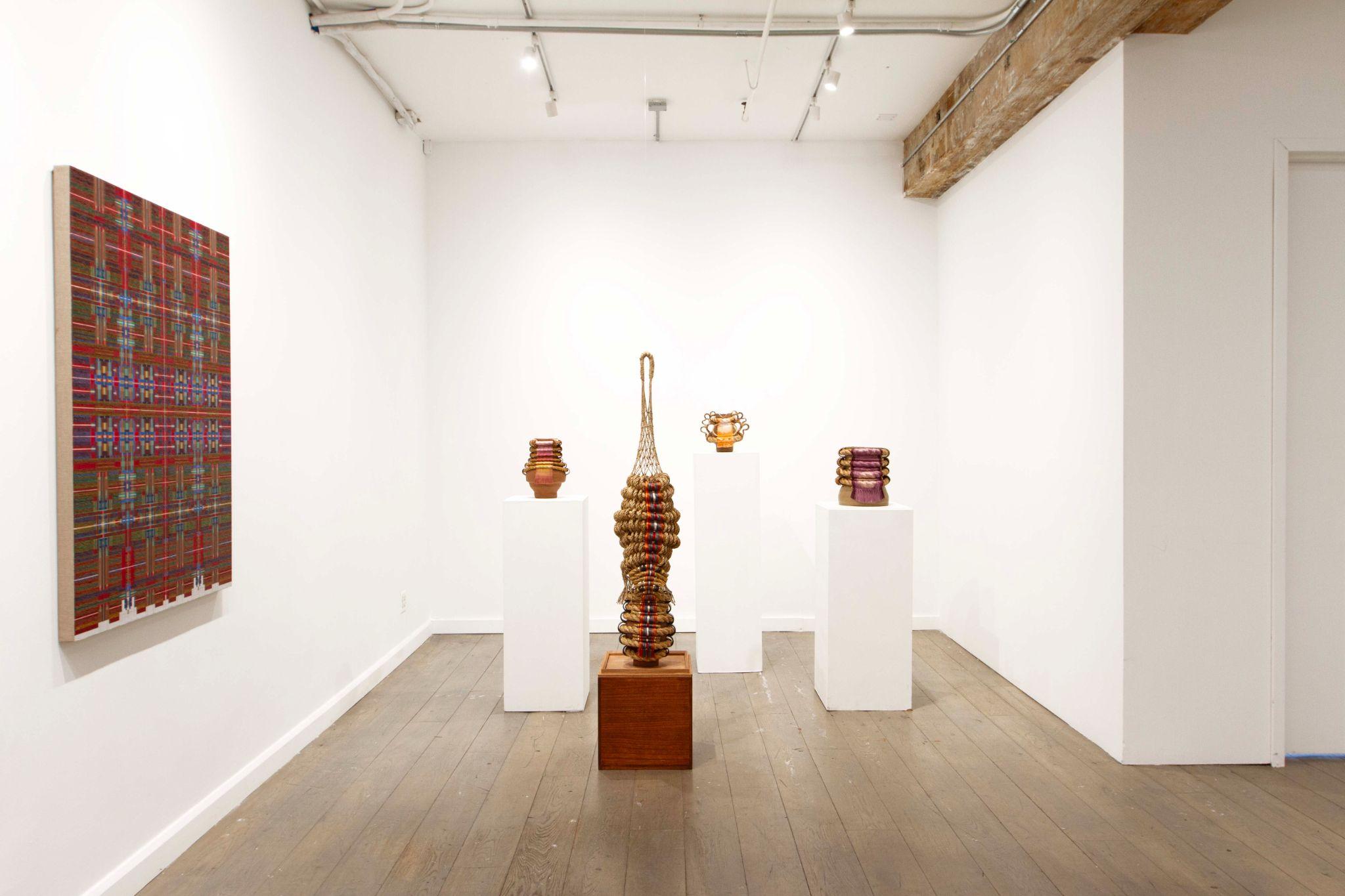
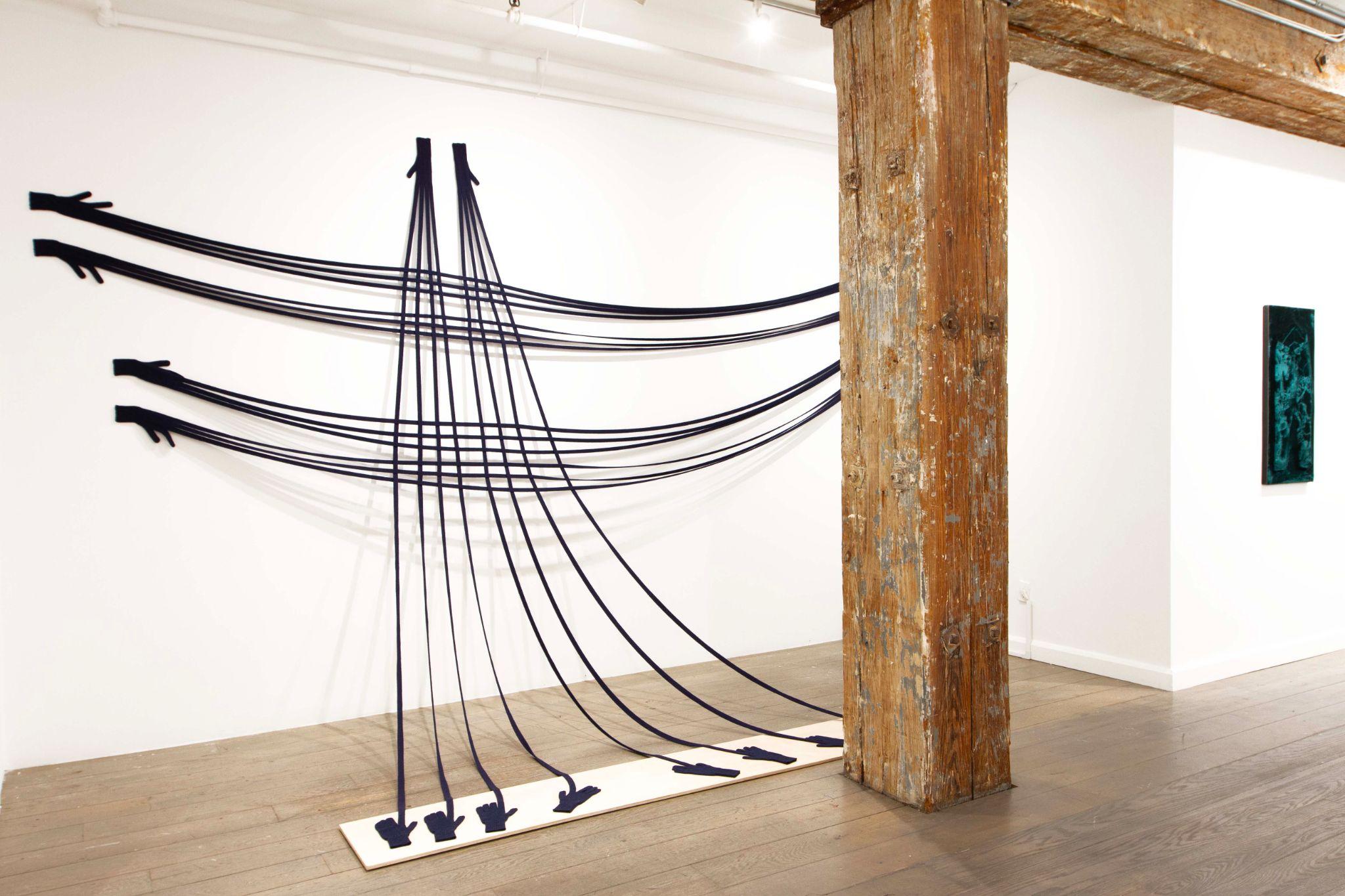
Of Fiber and Filament: Stretch, Hold, Release
Through November 8, 2025 at Picture Theory, 548 W 28th St,, New York
Stretch, Hold, Release at Picture Theory brings together works by Elisa Lutteral, Lior Modan, JaLeel Marques Porcha, Luis Emilio Romero, and Terumi Saito in an expansive presentation centering fiber arts and its command of the mutable nature of materiality, knowledge, and authority.
Pushing beyond binary debates on form versus function, Lutteral’s fantastical installation Social Structure One features pairs of black wool gloves whose indiscriminate fingers stretch out over ten feet, joining with corresponding pairs. The outreached fingers extend vertically and horizontally, forming elongated black lines that criss-cross elegantly yet eerily, creating a monumental and absurd intervention within the niche behind the gallery’s massive, distressed exposed beam, implicating both the space of the gallery and the body of the viewer in the act of art making. Also utilizing familiar objects and fabrics as a conduit for the provocative and uncanny, Modan’s monochromatic, sumptuous velvet relief works collapse boundaries between sculpture and painting. Their universally identifiable imagery including keys, snakes, and clouds, activates embedded unconscious associations. Bulging out from the picture plane, Modan binds the works with a synonymously recognizable buckled belt wrapped taut around the canvas frame.
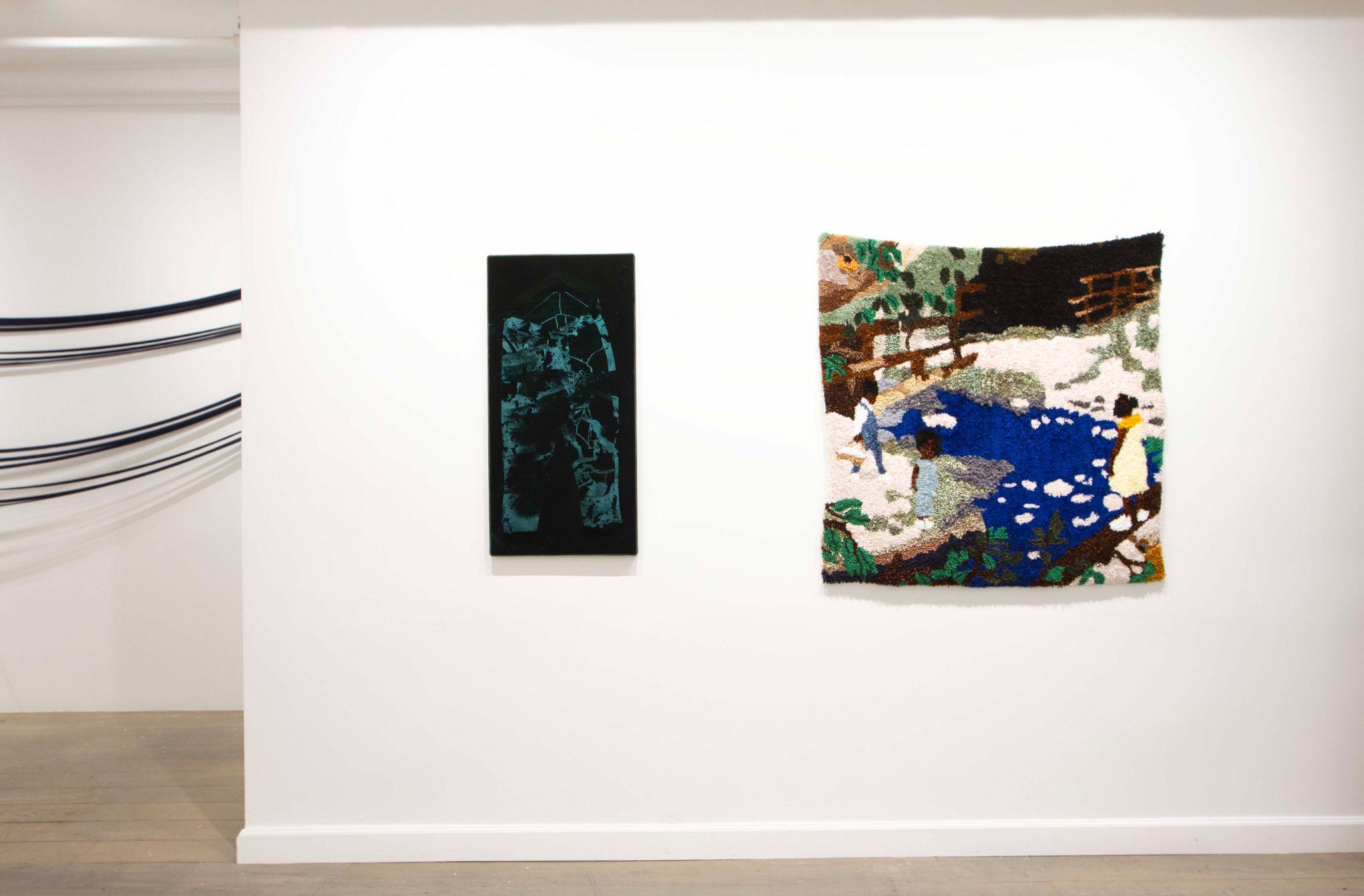
The tufted surface of Porcha’s pictorial tapestry I Know a Place (2025) imbues warmth throughout its bucolic scene in which three Black figures, whose gait, dress, and scale suggest youth, gather along a riverbank. The coziness of the material conveys intimacy and a packing in of emotive memory while the vignette of leaves framing the composition implies a sense of interiority within the image, affirmed by the quiet space of the black background (potentially metaphysical) in the top right of the scene.
While Porcha explores pictorial painterly resonance via fiber tapestry, Romero uses oil paint on stretched linen to create tactile patterns informed by Guatemalan weaving techniques. Romero’s rich and intricate paintings traverse time, incorporating his own ancestral knowledge while the visual language also resembles systems found in digital matter such as QR codes, computer matrixes, and circuit boards. Romero’s Fusion (2025) vibrates in juxtaposition to a grouping of Saito’s sculptural forms that assert their own material agency and ground the gallery space. Mixing backstrap weaving methods dating back to the Yayoi period (300 BCE-300 CE) in her home country of Japan with knowledge gained during residencies and research projects in Guatemala, Peru, Japan, and the United States, Saito’s vessels encapsulate the itinerant nature of networks of making while honoring integral particularities specific to time and place, communities and individuals.
Negating any categorical bounds, Stretch, Hold, Release conceptually mimics the material processes of fiber arts, interweaving time-tested practices with industrial modes, collective associations with intimate specificity, in a tour-de-force of transgressive slippages upending polar notions of aesthetic and utility.
-A.E. Chapman
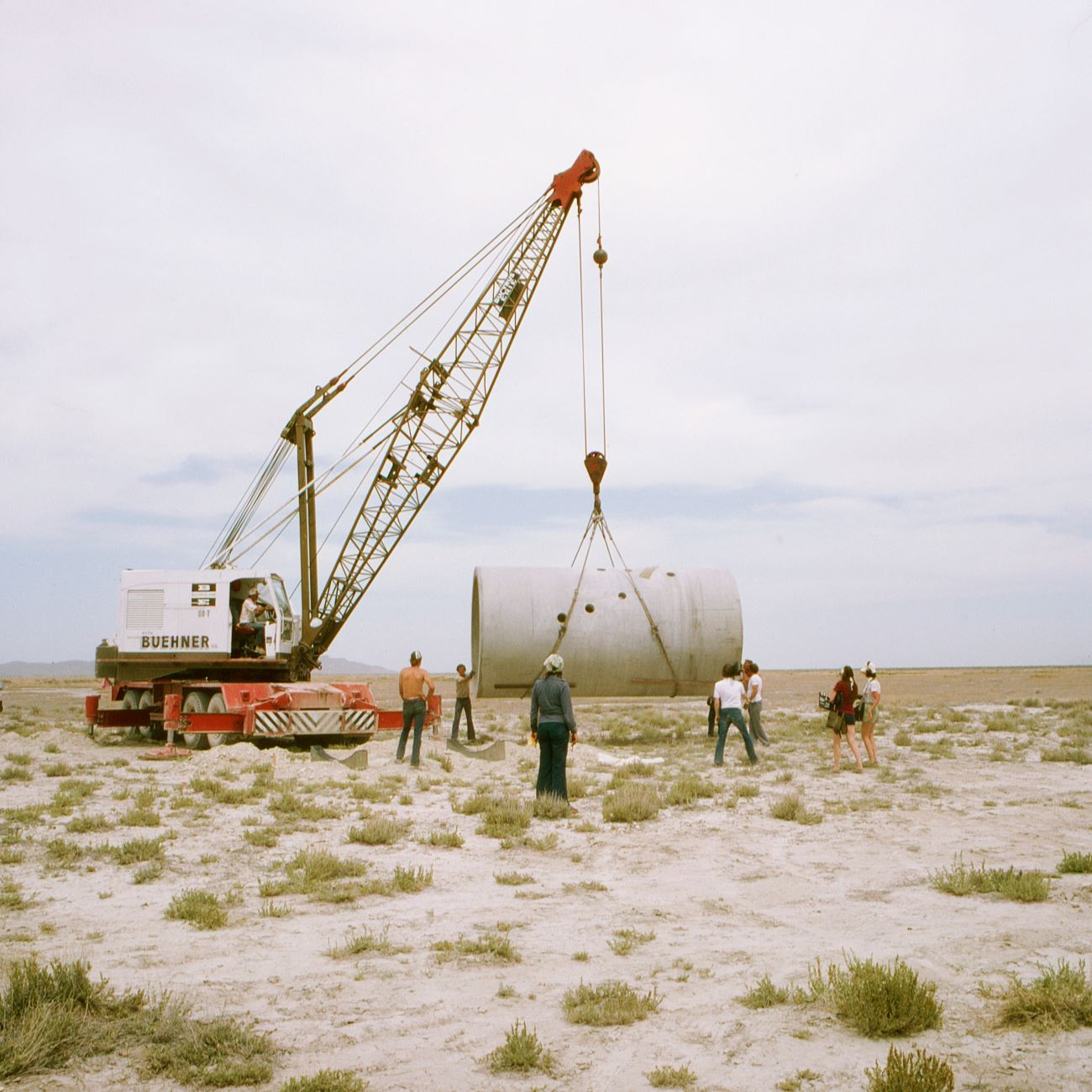
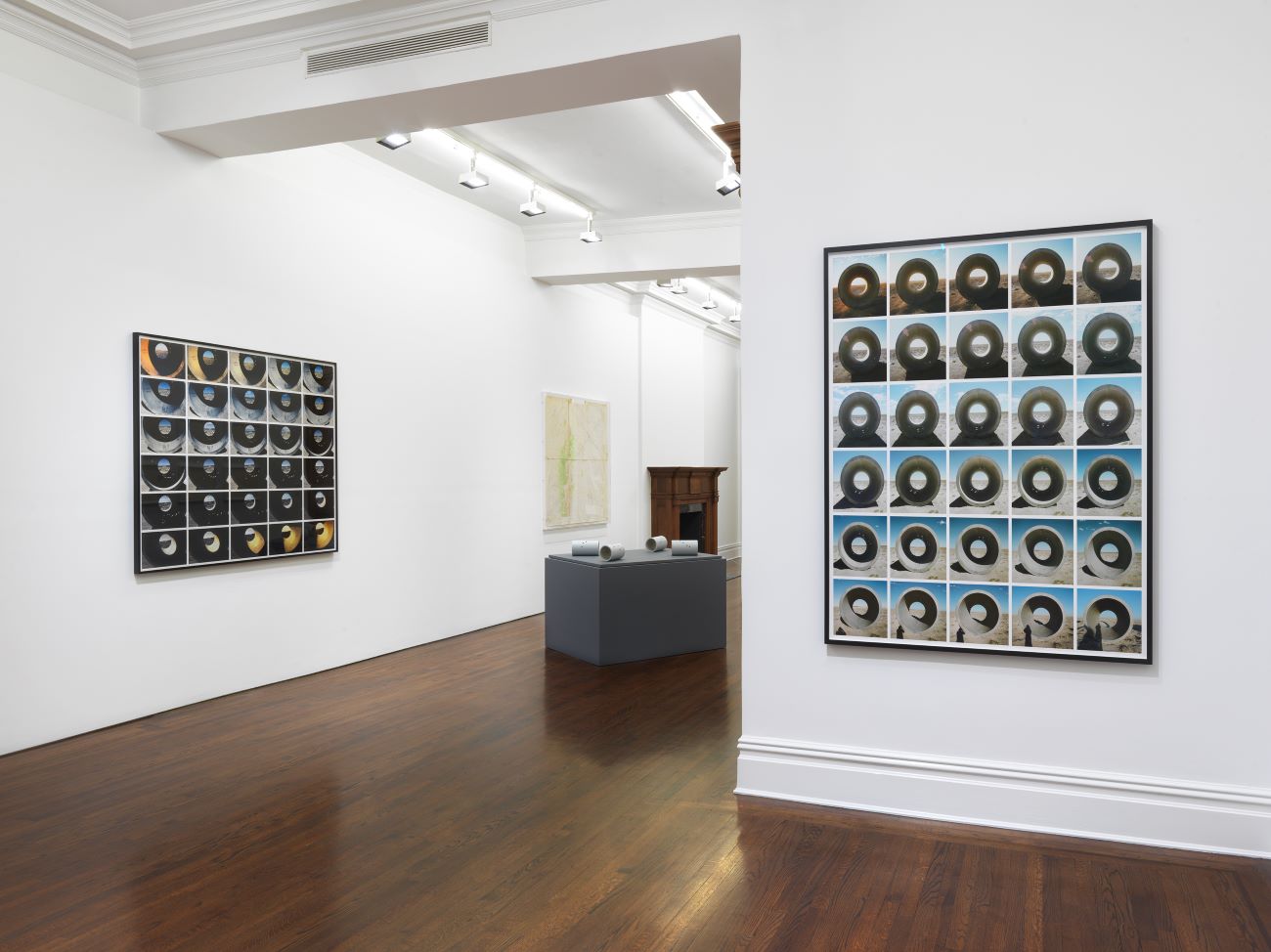
Reframing Horizons: Echoes & Evolutions: Nancy Holt’s Sun Tunnels
Through October 25 at Sprüth Magers, 22 E 80th St 2nd Floor, New York
Echoes & Evolutions: Nancy Holt’s Sun Tunnels at Sprüth Magers New York explores the intensely in depth preparation leading up to the installation of Nancy Holt’s site-responsive work Sun Tunnels from its conception in 1973 to execution in 1976. Filled with photographs, an original small-scale model of the work, fascinating, vigorously detailed sketches, a large-scale compilation of maps of the surrounding area, Holt’s film Sun Tunnels (1978) documenting the project, and two of her Locator sculptures, the exhibition unpacks Holt’s exacting process and grit in realizing the work that stands to this day in the Great Basin Desert in northwestern Utah.
These sculptures are kin to her contemporary David Lamelas’ Límite de una proyección I (Limit of a Projection I) (1967) and Límite de una proyección II (Limit of a Projection II) (1967). With a similar approach in their integration of the viewer, film, text, site, sketches, and sculptural interventions within and outside of institutional spaces.

Consisting of four 18’ long concrete tunnels (weighing twenty-two tons individually) laid out in an open x formation in a valley created by paleolake Lake Bonneville in the Great Basin Desert in Northwestern Utah, Holt constructed Sun Tunnels to frame the rising and setting sun during the summer and winter solstices—the shortest and longest days of the year—deeply rooting the work (and viewers) in time and place. Collaborating with astrophysicists, engineers, astronomers, and surveyors, Holt calculated the placement of each tunnel according to the topography of the land and its relation to the angles of the rising and setting sun during each solstice, forming an x arrangement with true North as the center. On the top of each tunnel, Holt had a grouping of smaller holes cut out, configured after the constellations Draco, Perseus, Columba, and Capricorn. The holes differ in sizes from tunnel to tunnel, each corresponding to the variation in their stellar magnitude.
In 2021, the Smithsonian acquired Holt’s archive; yet, the ephemera currently on view in the elegant gallery overlooking 80th street did not accompany this acquisition as it was determined artwork in its own right as stipulated by Holt or scholars of her work. Paradoxically, Holt noted in 1977, “Words and photographs of the work are memory traces, not art. At best, they are inducements for people to go and see the actual work.” In Echoes & Evolutions, the collective display of Holt’s methods and approach to Sun Tunnels affirms her persistent vision and reveals the expansive ideas and intellectual and industrial collaborations that brought the piece into being. Furthermore, the intricate, indexical, and cinematic threads running through the exhibition provide accessible entry points into not only Sun Tunnels but the elusive nature of ever-evolving definitions of art and art processes that seek to locate resonant meaning within the collective enigma of standing on a continually rotating and revolving ball of rock, water, and fire in a swirling cosmos of unknowns.
-A.E. Chapman
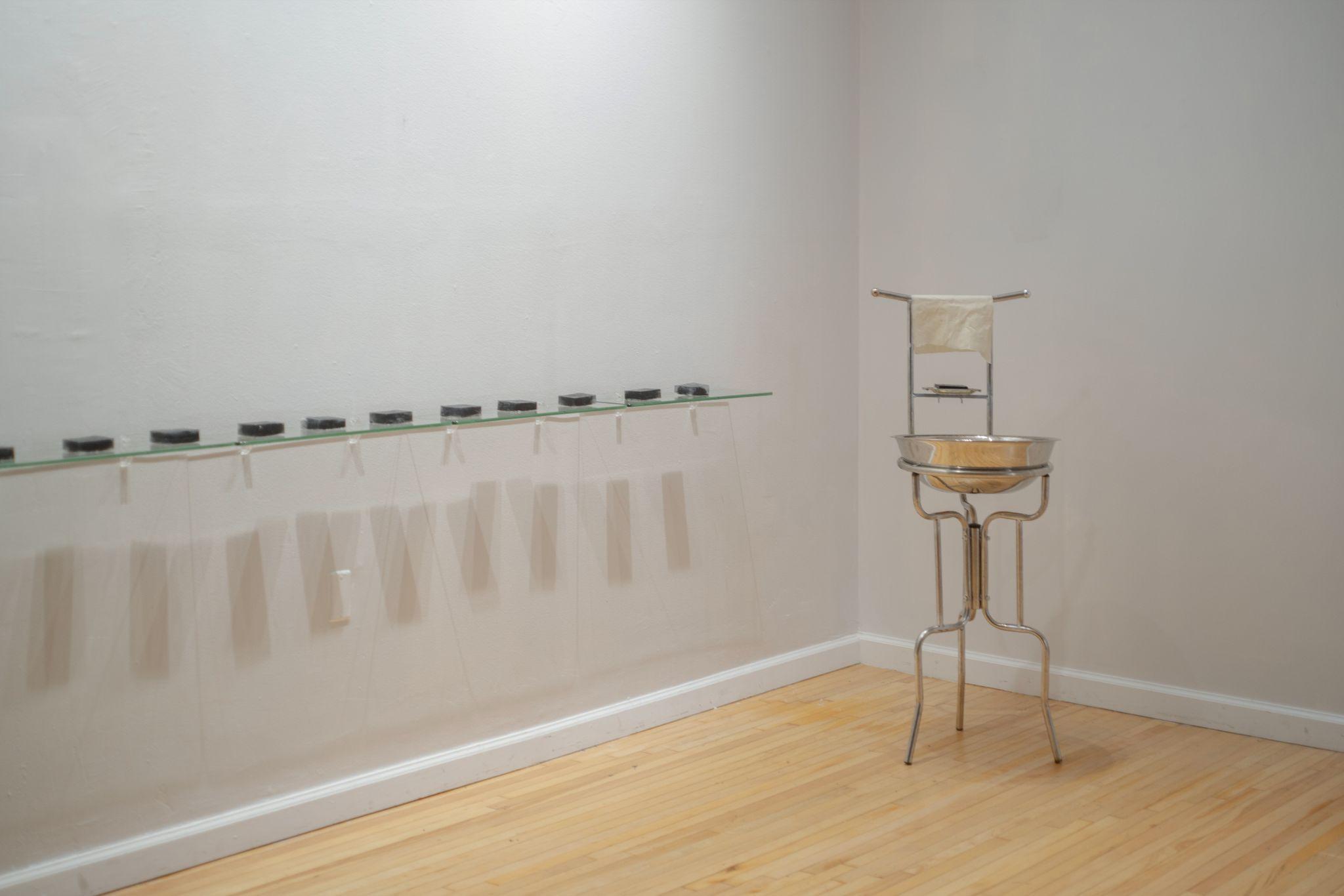
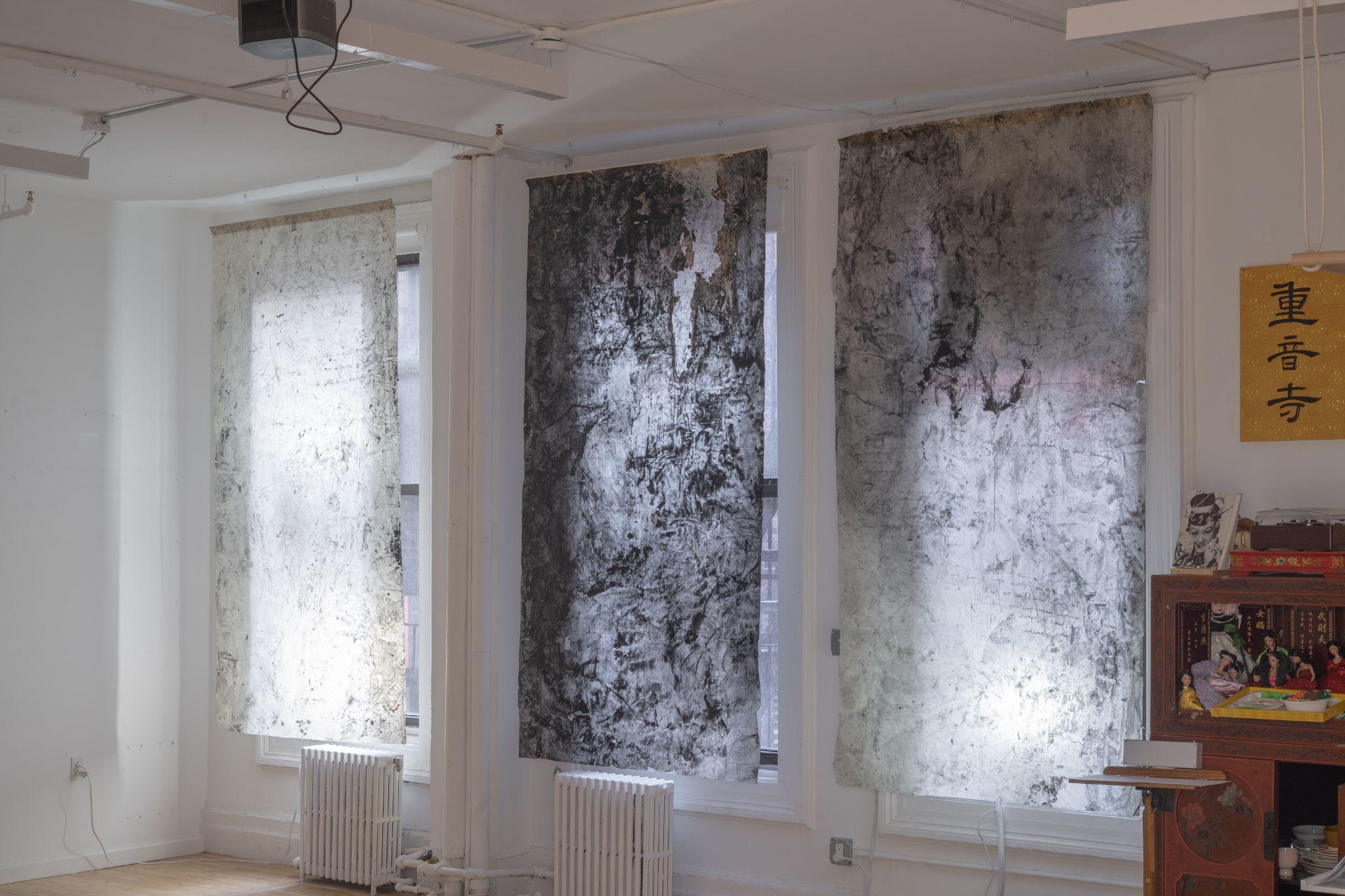
Memory, Grief, and Death Rituals: Jinjin Xu. To Utter Sounds of Awakening
Through October 20 at Accent Sisters, 89 5th Avenue, New York
A delicate wax paper window hanging billows slightly in front of an open window. Light seeping through its irregularities and holes. Poet and multi-media artist has recently been working with site-specific animatations of ‘thresholds.’ Brushing beeswax intermigled with ashes onto paper, the artist has used this traditional preservative to repair fissures. Two other wax paper pieces hang in front of windows alongside it. On a plinth, excerpts from the American journalist, writer, and political activist Iris Chang’s The Rape of Nanking on joss paper. Paper burned during offerings in East Asian countries. The artist gets a copy of the book, opening, then closing it: “I can’t look in it, it is too distressing,” she says, “many parts I have already forgotten.” The book is violent and graphic and the first non-fiction account of the mass murder of Chinese civilians carried out by Japanese forces in Nanjing written in English. Chang worked against death threats and censorship as she carried out research and published the book, eight years later, in 2004, she ended her life. Later Chang’s mother wrote and published a book addressed to her daughter.
Writing the day before her death in a notebook three promises: to get out of bed, get out of the house, and to see her parents. “When you read the book, you understand that she really wanted to be remembered,” Xu explains. The exhibition animates Chang’s words, but also grief and rituals around them, leading to letting go, and forgetting. On the floor are letters that Chang’s mother wrote to her daughter and Xu has also included letters that her mother wrote to her grandmother. On the wall opposite the wax paper an installation of fifteen soaps in a row, all inscribed with excerpts from the book, and a station where visitors can wash their hands with the soap of the day. Mine read: The rest was fabrication. Perhaps alluding to recollections or messaging about the massacre that Chang came across during her research. But, I think about Chang’s life story, it is easy to fabricate the causality that she committed suicide due to the pressures from writing the book. But her mental illness could have spurred her to write the book, or she might have written it despite suffering mentally. Overall, the various stations in this exhibition animate rituals around death and remembrance around traumatic events and people passing, softly and with care.
-Anna Mikaela Ekstrand
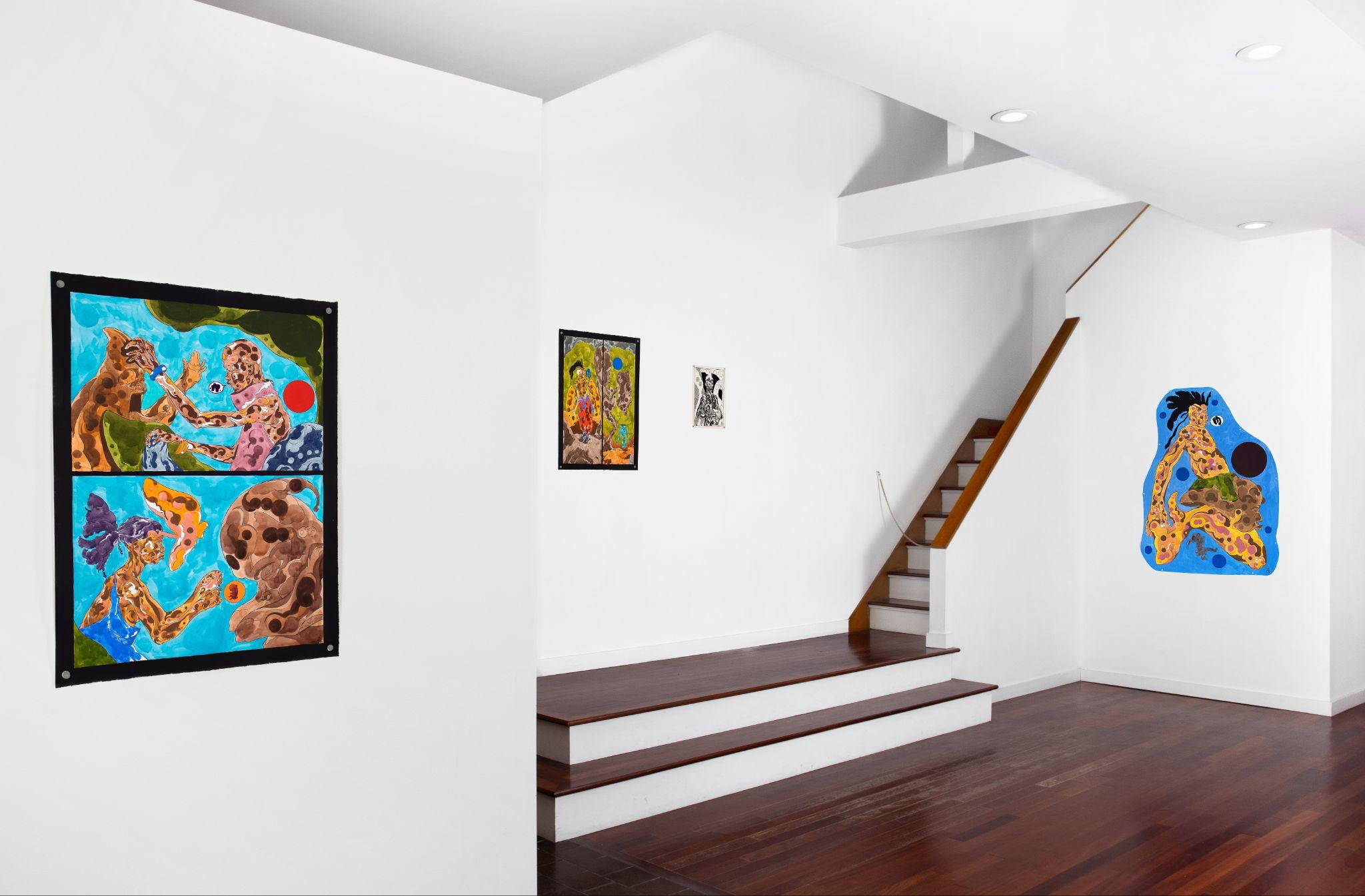
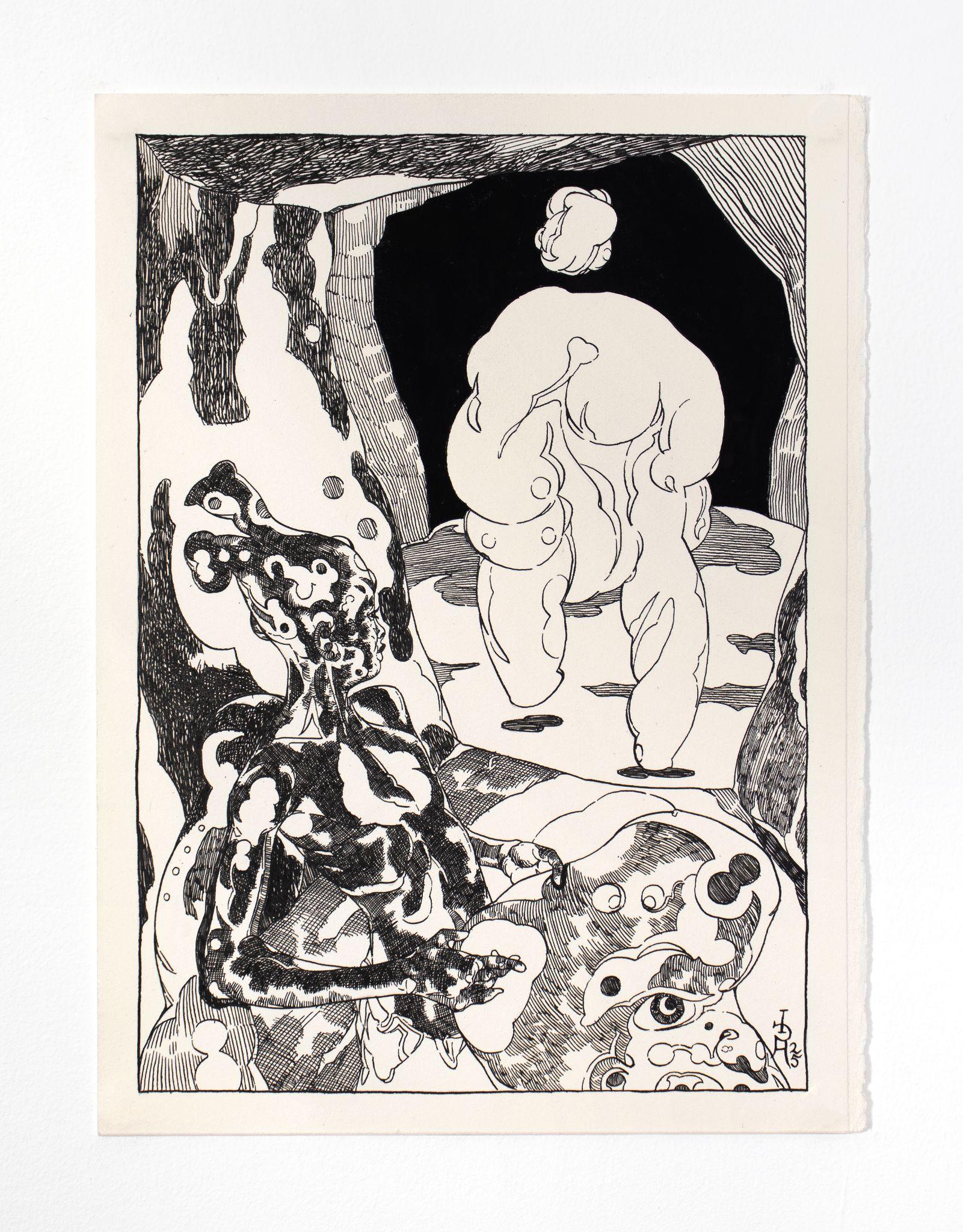
A Vivid Cosmology: Richard Ayodeji Ikhide Tales of Future Past
Through November 15, 2025 at CPM Gallery, 1512 Bolton St, Baltimore
Harrowing, comforting, lush, austere, archival, spontaneous. A compelling set of contradictions exists at the heart of London-based artist Richard Ayodeji Ikhide’s exhibition, on show at Baltimore’s CPM Gallery—a space that beautifully presents Ikhide’s multitudinous portrayals of (and negotiations between) Japanese manga, Edo rituals, Renaissance engravers, and the Romanian scholar Mircea Eliade’s theories on sacred and profane space. The gallery itself becomes twisty and dynamic, as the viewer passes by each piece, absorbing the details of cross-hatched ink drawings alongside the larger-scale watercolor compositions. Here, is the essence of world-initiating, rather than simply world-building. Something new is being born. Ikhide’s use of speech bubbles to impart thought and intention is a crucial entry-point into this landscape. They hover as a kind of halo amongst and between the figures who gesticulate, contort in isolation, or merge into one another. Guidance (2025) and Bodily Response (2025) are noteworthy for enacting a curious tension between movement and stillness; the former’s speech bubble exudes from a landscape of vivid disruption while two figures transact silently in the foreground.
In Bodily Response, a lone body hangs static – or leaps, or dances – in an azure blue sky, speaking a proclamation that is implied to be beyond regular comprehension. Amorphous secondary shapes in this piece, and others by Ikhide, recall Surrealist paintings, particularly the lunar morphology of Yves Tanguy. This dream space of ritual and intersections is augmented by Ikhide’s use of color, which does not create assertive shadows or force the viewer to detect the placement of objects against a distinct horizon line. Instead, each region of the larger paintings is given its own treatment: stirring, concentrated, emphatic.
During the artist’s talk, Ikhide spoke of his intention to recreate the nuances and tonalities of Black skin; this is acutely rendered in the fabric of each composition. Furthermore, the small-scale drawings, such as Youth I and Youth II (2025) offer texture as a vehicle to understand perspective; compacted shapes coexist with deceptively unfinished sections. They feel like written poems, where a narrative line ebbs and flows, and every millimeter of the page is deployed for effect. To fully absorb this exhibition is to pay attention to mark-making – spacial paradox is created by the line itself. That being said, Ikhide’s work refutes linearity as a concept. We are, instead, asked to contemplate a constantly-evolving series of forms.
-Jane Lewty
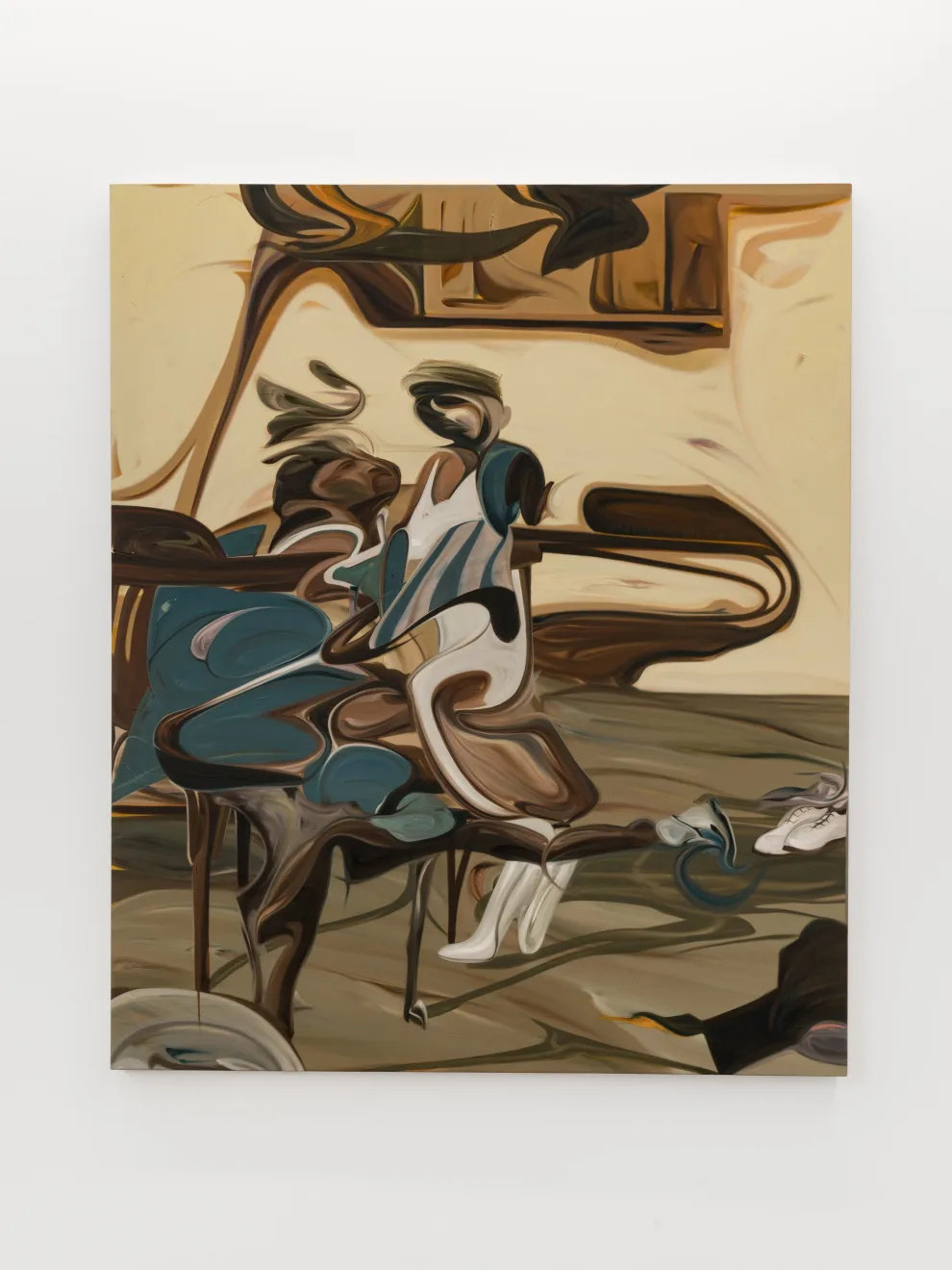
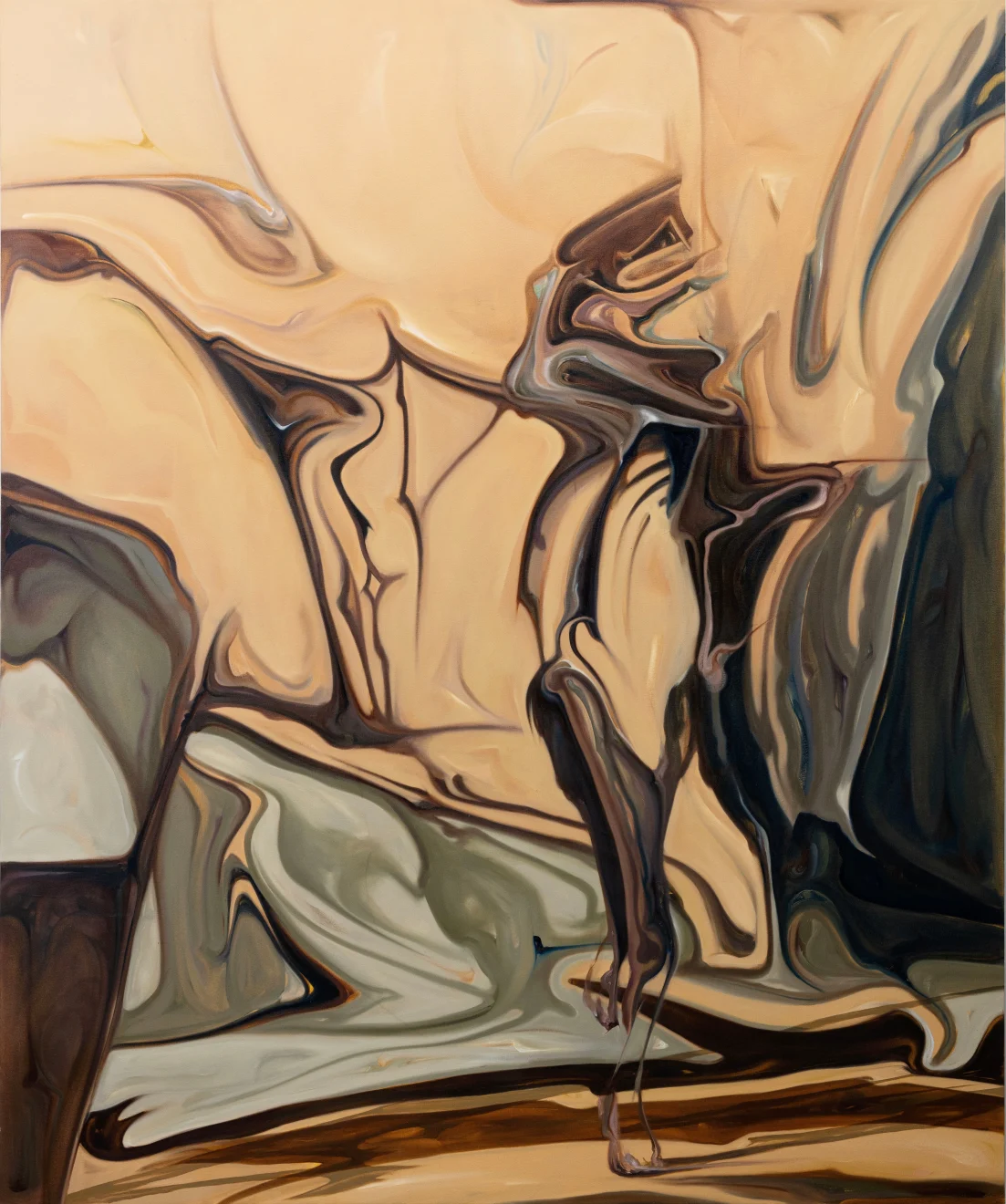
A Third Space: To Translate is to Move Across
Through November 1 at Monique Melouche Gallery, 451 N Paulina St, Chicago.
Eyes traveling across muted landscapes, a vibration of displacement is overtly evident while visiting To Translate Is to Move Across, a solo exhibition by Luke Agada at Monique Meloche Gallery in Chicago. The canvases shape a vulnerable reflection on what it means to exist between two worlds. Born in Lagos and based in Chicago, Agada utilizes abstractions and poignant lines in a neutral and muted color palette to communicate the fragile terrain that encompasses belonging, cultural hybridity, and migration. Between Agada’s use of grays, terracotta, and teal pigments, his strokes exacerbate the dissonance and continuity—fratgmented existence—of the diasporic experience in contemporary culture.
In The Song and Dance After Crossing, 2025, the outline of a distorted and elongated figure is found within linear chaos. The ribbon-like fluidity of the strokes enhances the feeling of flux. In my mind it serves as a visual representation of postcolonial scholar Homi K. Bhabha’s third space: a fluid manifestation of diasporic identity, and an inspiration for the artist. The figure is not fully here nor there; it exists somewhere in between interpretation, Agada’s imagination, and a memory.
For Agada, translation is the process of adaptation and survival that manifests itself in reimagining the third space rather than transitioning seamlessly through both identities. In the exhibition, Agada has deftly placed his spectators in a space to linger in ambiguity, rather than focus on resolution.
-Caira Moreira
You Might Also Like
Recalling Nǚshū, a Secret Women’s Language, Poet JinJin Xu Knocks Words in Shanghai Exhibition
Tulsa Artist Fellowship Champions Social Practice and Community

